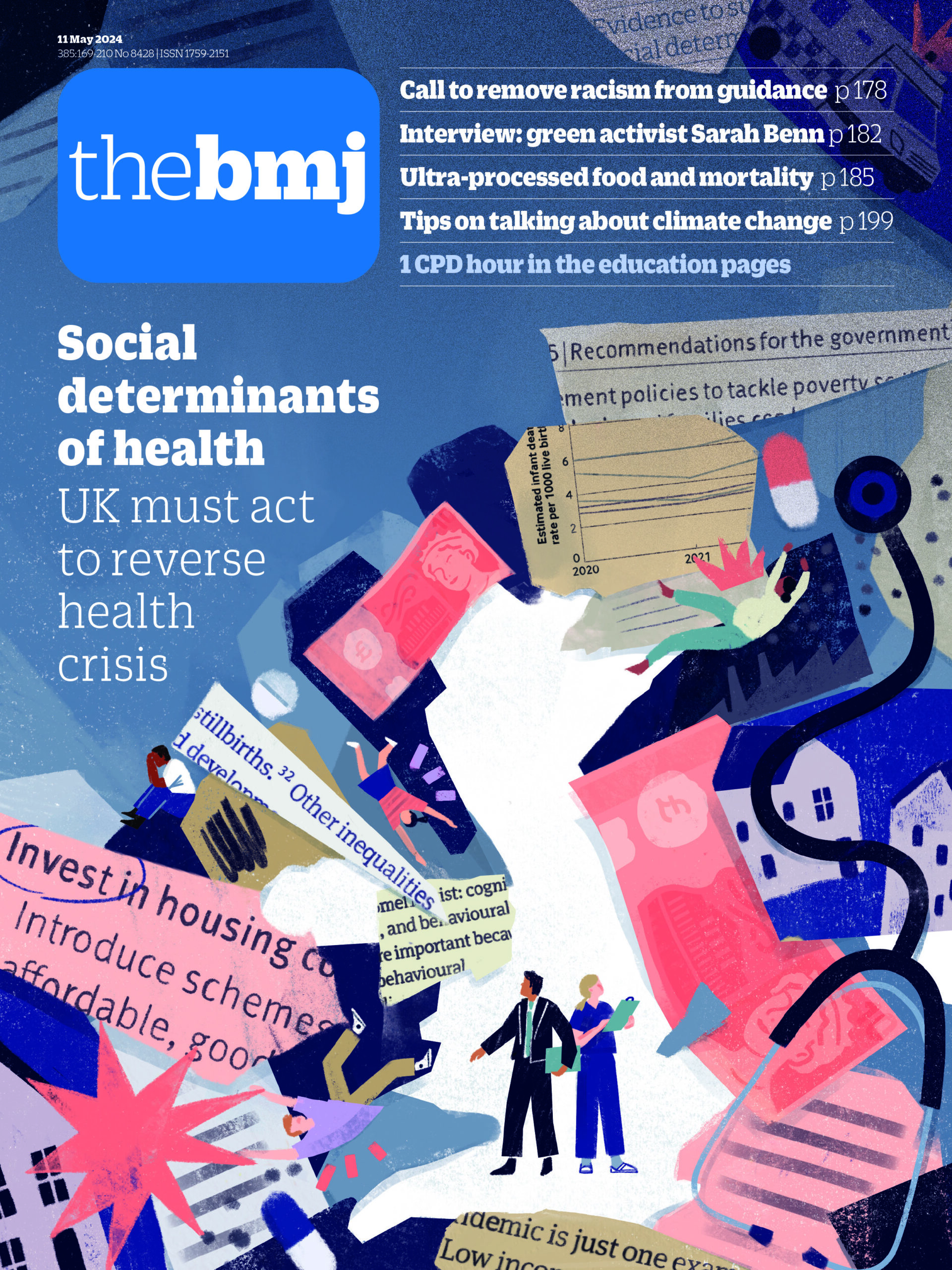A recent paper from the Institute for Fiscal Studies has gathered data confirming what many women in male dominated specialties in UK medicine have long since known: early exposure to relatable female role models affects your likelihood of choosing that specialty.1
Role models are essential to creating a diverse workforce and harnessing all the benefits that come with it—helping to close the gender pay gap, reflect the diverse needs of patients, and improve workplace culture.1 But we need to exercise caution when interpreting these findings.
The presence of women in senior positions is no panacea for gender inequality in the workplace, nor can we expect individual women to singlehandedly solve the many structural barriers that prevent women from choosing certain specialties or progressing in their career. Attention should be paid to supporting those “role models” who, by virtue of their position, are expected to act as ambassadors for their gender—a task that they can’t and shouldn’t always be expected to get right. Similarly, it’s vital that we don’t become complacent or tokenistic, believing that by appointing a doctor with a specific trope of intersectionality we’ve solved wider workplace problems of poor diversity and representation.
Gender and specialty choice
Women now make up most of the UK medical workforce in the under 50s demographic, but the gender composition of specialties still varies hugely.1 For example, in July 2019, 71% of doctors training in paediatrics were women, which compared with only 35% of those training in any surgical specialty.1
The Institute for Fiscal Studies has examined data from the UK electronic staff record from 2012 to 2021 to investigate whether exposure to a higher proportion of female consultants in a department during foundation training affects a doctor’s choice of medical specialty. Its main finding is that women in foundation training who are exposed to senior female doctors during a placement are more likely to go on to train in the placement specialty. No surprise there. More unexpected, perhaps, is that this holds true only if less than 20% of senior doctors in the specialty are women. In specialties where gender parity at a senior level is achieved, or almost achieved, the difference in the effect is lessened considerably.
Anecdotally, I’ve seen this effect at play in many surgical specialties. Too few women, and female junior doctors are unlikely to pick the specialty—but just enough, and their decision making is swayed. Women may be more reticent about being the lone trailblazer in a department, but with a few allies it becomes a more desirable place to work.
That said, the research authors do note that geographical and schedule flexibility are the other main determinants of specialty choice. There was no detectable effect of role modelling in specialties that involved the highest number of on-call duties, such as intensive care medicine—suggesting that, while unwelcoming cultures can be eroded and the flexibility of work improved, sometimes the fundamental nature of the work is still a deterrent to women when considering their specialty choice.
As the paper highlights, achieving gender parity across specialties is more than a box ticking exercise. Many patients feel more comfortable seeing someone they find relatable, and doctors need to reflect the diversity of the patients we treat. Data consistently show that improved diversity in the medical workforce (of which gender is just one facet) improves patient care.234
Increasing gender diversity in more specialties also has ramifications for the gender pay gap. Although, in principle, doctors employed by the NHS are paid according to common pay scales, the paper describes how certain specialties attract additional paid clinical or managerial responsibilities. These more lucrative specialties are often male dominated.
Sidestepping tokenism
Role modelling is clearly important in gaining gender parity, but we need to avoid tokenism. From my experience in general surgery—a typically male dominated specialty—it’s not simply the presence of a role model that really matters (box ticked, we have a woman in the department—done!) but who that person is. Sadly, some women expect you to face the same challenges they did in order to prove your worth.
The women who have been the most valuable to me are those who pull other women up behind them. The “girl boss” archetype of the woman who puts her armour on and steps on the heads of colleagues to get to the top has never encouraged me to stick it out when I felt like an outsider. My role models were the women in those male dominated worlds who showed me that softness and vulnerability were OK, that kindness and compassion weren’t weaknesses; and the women (and men) who told me that while I didn’t look or behave like many surgeons, this representation of difference allowed me to provide a different sort of care to patients, which may not have historically been afforded.
Finally, it’s paramount that we don’t forget the personal cost this all has on women or on other doctors who represent diversity in their specialty. These women didn’t simply stumble with ease into specialties that are typically male dominated. For many, the journey to get these positions comes at great personal cost. It’s difficult and tiring to be relentlessly pushing against the walls that threaten to keep certain specialties full of men—from the lack of flexibility to accommodate caring responsibilities to the ethos of teams with less gender parity (golf and pint culture at best, sexual misconduct at worst). We often mistakenly apply a survivorship bias5 in our efforts to understand the trajectory of female medics’ careers, looking at those who survive long enough to be role models, when perhaps, if we want to find out what we can do to better tackle gender disparities, we should be considering those who leave the specialty.
For many women, the journey to get to a senior role continues to be fraught with ambiguity, and many may wonder if they could have made an easier choice. Being a pioneer comes with neither financial nor reputational renumeration, and while the reward is doing a job you love and inspiring others to follow suit, the pressure to always “get it right” shouldn’t be underestimated. We should look to those who are outliers in representation in their specialties as leaders of the charge, but we must also remember that they need the support of their colleagues and employer, as the path to diversity isn’t always an easy one.










